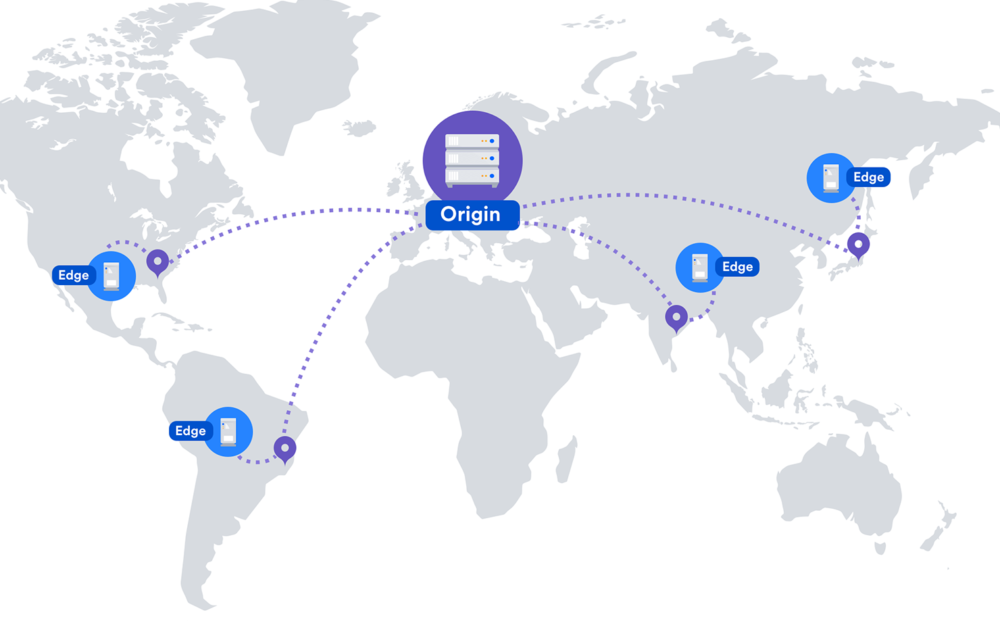
Once you set up your website and it’s up and running, you always want to push it to the top level, and this can be done by forming your own Content Delivery Network. This is, of course, the right step as CDNs are a fantastic way to serve the best possible content. The first thing you’ll notice is the reduced latency, and the next one is the amount of freedom you have when it comes to the customization of the content. There are many CDNs out there on the market, but you should aim at making one yourself. Yes, this is possible, and we are here to point you in the right direction.
In the words of the famous band Coldplay, no one said it would be easy, so you shouldn’t count on it. But, the rewards are great if you put n a lot of effort, a bit of engineering; you’ll be able to boast with your own CDN and be aware of what others who have it and provide it went through. If this were your idea from the start, you’d be glad to hear that we’re here to help you by writing this article. Below you have explained how to build your own content delivery network – 2024 guide. First, we’ll start with servers.
DNS Servers

There’s one thing you need to know about Content Delivery Networks – they need to be fast. It’s all about that speed. So, in accordance with this, the first thing you need to ask from your servers is that they’re quick. This is the essential part; everything else comes later and is second in order. So, you must be wondering how this is getting done. When DNS in is on the move, it sometimes needs to go all over the place to reach the download of your website at the edge server, which is the one closest to the end-user, and this getting done is only 50% of everything that needs to be completed.
The next thing you need to know is that Border Gateway Protocol is what many network providers use as a means of communication between them to determine how far away they are from the users and which network is closest so that they target that one for the reach. In most cases, the goal is to find the shortest and quickest route to the end-user, which is, in most cases, achieved. When this happens, IP addresses on a couple of locations are targeted before the DNS server goes for the closest one. This entire process is what is known as Anycast to those who are well versed in it.
Anycast

The one thing you need to know about Anycast is that your site’s download can’t rely on the BGP Anycast. The reason is simple, and we’re going to explain it in the next paragraph. In standard cases, the BGP Anycast needs more than 200 IP addresses, and it also seeks to control the network hardware. Now, we’re talking about making your own, as do it yourself Content Delivery Network. If you are the one doing it yourself, this approach will be too expensive; trust us on this one. But, this isn’t even the worst part; they’re also very unstable. The reason is that despite DNS having the ability to go in two directions from one packet, the web will still insist on a call to be connected and deliver content. So, when the connection is unstable, the route will be changed and/or shifted, which will cause an altercation of the link. This is a massive issue and a problem to be facing on a daily basis, considering that what you’re trying to achieve aims to simplify your website’s operations. Besides, if you are looking for, and we’re sure you are, a fastback and forth expedition, you won’t be getting it with BGP route calculations, so it’s best to avoid them.
CDN: Setting Up Content Distribution and Certificates

By now, you probably understand that we can’t operate Anycast on our own. This means that we have the same issue with the DNS servers. This is no major problem, but it needs we have to have more focus on domain name system service. There are many options on the market, but be sure to aim for the three we’re about to recommend: DNS Made Easy, Dyn, and Amazon Route 53. After choosing the DNS server, you can proceed to add domains and IP addresses. You should look to use as many DNS servers as you can afford and have them spread out across the planet, which will significantly benefit your websites. The main focus for everyone who takes on this journey should be two things: Content Distribution and Certificates. The first one will take much of your time, but it’s not complicated at all. Everything you need to focus on is that media and content housed in your edge notes are the same. The certificate step is going to be even longer but also doable with a little bit more effort. At this point, you’ll already have many edge locations, and you need to make sure all of them are with a certificate. This is not something you need to do entirely on your own. Getting certification from a certificate authority should be a preferred route.
Once you’ve set up all of the above, you are ready to dominate the web. It is hard work to set it all up, but with the right direction, it can be handled. Many of you will feel to urge to quit it all midway, but you shouldn’t leave that quickly. If you push it all to the end, you can reap great benefits and have that feeling of self-achievement, which comes around when you complete a massive task like this one on your own. If you’re still unsure how to proceed, be sure to look for additional information, which can be found at https://constellix.com/products/geodns.




